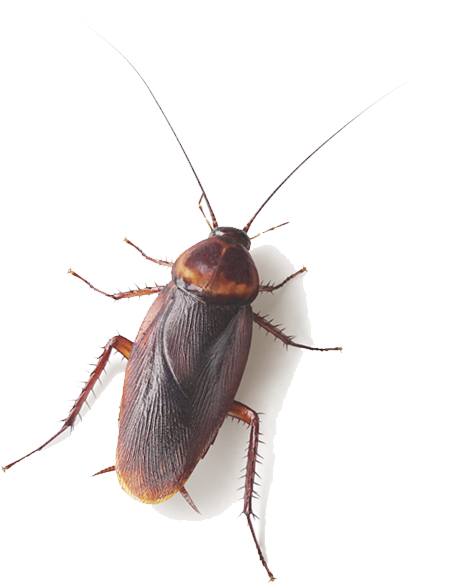School Pest Control Melbourne
If you run a school or daycare, a pest infestation can be a huge problem for the kids in your charge. Not only that but some kids turn out to be budding entomologists. The problem is that they frequently have the self-preservation instinct of a pile of bricks. Their inexperience makes them curious, so the first instinct when they see something new is to investigate it – which depending on age generally amounts to either picking it up or trying to eat it. Which is why you need school pest control.
The fact is that animals, critters, and creepy crawlies are vastly interesting to kids. They’re moving, they’re weird, and they eat all the things kids aren’t allowed to and live. However, these pests are often dangerous in their own right. Bites, stings, and scratches can all cause pain or injury, or even trigger a severe allergic reaction. Not to mention the variety of harmful bacteria that these creatures can carry.
If you don’t want the kids in your care to go grasping at pests, making them sick or injuring them, then why not give Pestline a shot and call us on 1300 361 646 for the best school and childcare pest control in Melbourne?
The Pest Control Experts
No one wants to send their care to the emergency room or have to break out the first-aid kit because the kid was exposed to some kind of harmful pest. Pestline has been at the forefront of school pest control services in Melbourne for years. We offer a comprehensive, holistic range of services that deal with the source of the infestation, as well as aftercare. We aren’t in the business of freeing up homes for new invading pests!
Pest control in schools and childcare settings is essential not only to keep kids safe and healthy but also to keep your facilities clean and your reputation intact. There’s nothing more important in the education and childcare industry than maintaining a proper environment, and Pestline is the company to help you do exactly that.
Common Childcare Pests: Knowing You’re Infested
The following is a list of the most common pests that occur in the childcare industry, the threat they pose, and how to know when you’re infested. If you notice several of these symptoms cropping up with any kind of regularity, contact us as soon as possible.
Ants (Ochetellus glaber)
This species of ant is native to Australia and is one of the nation’s most common household pests. Their bite and sting are nearly non-existent, causing a minor, irritating, stinging sensation in affected areas. However, the real danger they present is in their large numbers, and ability to get into small areas. Their perpetually active nature also makes them particularly susceptible to getting into food and drink left out of storage overnight. Should kids eat food infested with ants it can prove a very painful experience and childcare pest control is needed. Signs of an infestation include:
- Large visual ant presence.
- Extensive trails of ants.
- Mounds of dirt or sand that ants use as a habitat.
- Ants visibly on food or in food storage areas.
- The presence of disembodied bug wings on points of egress and the floor.
- Large ant congregations on or near trees.
Cockroaches (Periplaneta australasiae)
Cockroaches are a constant thorn in the side of businesses everywhere. This native Australian species is frequently mistaken for their American cousins, but ours are much smaller at only 25-33mm long. These nocturnal creatures make their homes in narrow, dank environments, and often carry bacteria that are harmful to people, more so to children. Their unique blend of nighttime activity and enjoyment of human foodstuffs creates a dangerous environment for children. You may have an infestation if you or anyone who works with you notices the following:
- Heavy juvenile presence.
- The discovery of one or more adults.
- Discarded egg cases left around.
- Concentrations of small dark spots or smear marks (droppings).
- Areas affected by a musty odour (strength of odour is relative to the amount of cockroaches).
Houseflies (Musca domestica)
Typically, one or two houseflies hanging around aren’t a major issue, particularly when your facilities open to the outdoors regularly. However, an infestation can represent an issue in noise pollution, a heavy bug presence, and the transfer of harmful bacteria. A housefly infestation is in effect if the following becomes apparent:
- Excessive fly numbers are present.
- Flies are frequently sighted.
- Excessive dead flies are present.
- Flies cluster around lights, gutters, mulch, and bins.
Mosquitoes (Culicidae culicinae)
These insects are more dangerous than people would give them credit for. One of the most predominantly hematophagous (blood-eating) species in the world, mosquitoes are incredibly dangerous because of their blood-feeding behaviour. Blood-to-blood contact through their proboscis is instrumental in contaminating their hosts with various diseases. Aside from this, mosquito bites cause itchy, irritating rashes and growths to develop that may cause serious distress to some children, particularly if they are allergic to mosquito bites. Infestations become apparent when:
- Adults are frequently spotted (please pay attention to residents who say they’ve noticed more mosquitoes).
- Stale water carries visible mosquito larvae.
- Frequent and persistent, high-pitched buzzing.
- Frequent evidence of bites (sores, itchy growths, allergic reactions).
Rodents (Mus musculus/Rattus norvegicus)
Wild house mice (mus musculus) and brown rats (rattus norvegicus) are quite common, especially in areas where there is easy access to food, and for a species that feeds on scraps regularly, the schoolyard provides a bounty of provisions. Rodents spread disease and fleas, and should they feel threatened by a child, they will defend themselves with bites and scratches. You must have school pest control to avoid legal complications. Look for the following evidence of an infestation:
- Food packages, drawers, cupboards, and sinks are frequently littered with droppings.
- Various soft materials such as paper, fabric, and plants show evidence of shredding or chewing.
- Food packages have been chewed.
- Walls have holes in them, generally at ground level.
- Odours come from places that can’t be reached.
Termites (Coptotermes acinaciformis)
These termites are some of the most prolific in Victoria and are responsible for a huge majority of Australian building damage. They come in a variety of shapes, due to their various adaptations for the myriad of tasks that a colony takes to thrive. These colonies are generally made in eucalyptus trees, with underground tunnels being burrowed by workers to find food. The following indicators signify a termite invasion:
- Discarded wings signify that scouts have successfully established a colony nearby.
- Visible swarms.
- Droppings are very similar in appearance to sand. They use this material to build tunnels, but they often produce excess amounts.
- Wood damage.
- Tight doors and windows as a result of wood warping from termite feeding habits.
Bees and Wasps (Apis mellifera/Vespula germanica)
The Western or “European Honey Bee” (Apis mellifera) and European Wasp (Vespula germanica) are both species of flying insect that sting as a form of defence. While bees are inherently necessary for the benefit of the environment and generally docile, if they perceive a threat to their colony they will defend it. The Wasp, however, is much more aggressive, usually attacking more readily and with little to no restraint. Aside from the painful sting, these two species are one of the most common allergies in children in Australia, and therefore great pains should be taken to deter an infestation, and should one occur it must be treated as an emergency. If you see any of the following, please contact us immediately:
- Constant buzzing. Bees and wasps like enclosed spaces and often make their homes in cavities like walls. If going about your day you hear frequent or constant loud buzzing, it may be cause for concern.
- Holes around the property. Circular holes that randomly appear could be a sign of a nest, or attempt at nesting.
- Active hives. Bee hives generally involve the bees being exposed to the outdoors as they build their wax comb. Wasps like to build paper-like chambers to congregate inside. If you spot either of these on a tree or building, immediately call Pestline for childcare pest control and keep children away from them.
- Increased presence indoors and outdoors.
- Frequent stings.
Pestline for School Pest Control
When it comes to keeping kids safe from pests we take pride in our work. We understand the severity of a pest infestation with children and apply our customary diligent work ethic to the scenario.
When you hire us, we aren’t just getting rid of your immediate problem. Once the immediate infestation is dealt with we take great pains to ensure that another one won’t just immediately take its place. Our experience and dedication to keeping the kids of Australia safe is what makes us the best for the job. That’s why Pestline is trusted by businesses all over Australia.
Fill in the form or contact us now through our website. Alternatively, call our friendly staff on 1300 361 646.


